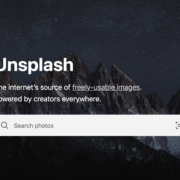Navigating the Changing Landscape of Social Media in 2023
Social media has evolved from simple conversation platforms to robust entertainment systems.
They are now moving towards becoming marketplaces, a change primarily driven by algorithms – the secret formulas that determine how these platforms work.
Take, for example, Facebook’s Mark Zuckerberg’s efforts to create a ‘metaverse’ or Elon Musk’s expensive purchase of Twitter. These shows attempt to evolve the social media business model beyond personalized advertising. Something similar is also seen in Instagram, adopting features popularized by Snapchat and TikTok.
However, these changes have raised concerns about user data privacy, especially with international platforms like China’s TikTok.
For instance, Elon Musk’s acquisition of Twitter raised many eyebrows and led to significant changes. Some major advertisers like General Mills and General Motors cut or reduced their advertising budgets in response. The platform is now looking at transforming into a marketplace where it can engage with commercial partners differently.
Other platforms like Instagram and Facebook resemble more and more TikTok in their content format to attract and retain users. However, they might also propose new formats to chase those nostalgic users who aren’t willing to switch to video production or consumption. Meta has been working on a platform similar to Twitter, which is expected to be launched this year. Recently, TikTok’s owner ByteDance started to test Lemon8, a channel similar to the old Instagram (based on photos rather than videos). Other platforms might emerge – despite it’s hard in such a concentrated market. Among the others, it’s worth mentioning BlueSky (still invite-only) and Mastodon, a distributed network out for a few years but never able to gain or keep a substantial market share.
Younger generations (GenZ and beyond) focus on communities rather than platforms. They’re unfamiliar with Facebook and prefer direct messaging apps or private channels via Diskord (between a chat and a forum) or Twitch. This channel focused on live streaming and gained popularity thanks to its focus on gaming and other niches, despite almost all social networks offering live streaming (starting from the video-leading platform YouTube, owned by Google).
Social channels have been under scrutiny for years due to political polarization or ideological segregation, an effect detrimental to democracy since users tend to consolidate their beliefs by watching only content strictly related to their network and preference. The Newsfeed algorithm’s main goal is to retain users as much as possible on the platform. Hence it often leads to confirmation bias, as users are mainly shown content they already agree with.
LinkedIn stands out from this trend by encouraging sharing different viewpoints on its platform, primarily used for professional networking.
Despite some negative aspects, it’s undeniable that social media play a central role in our lives. According to the British consulting firm Smartinsights, more than half of the world’s population uses social media daily for an average of 2 hours and 27 minutes.
How these platforms structure their content to keep users engaged has various effects. It can reduce individual focus or redefine social messages, such as political communication. It also opens doors for cybercriminals who aim to steal user identities.
Social media news has significantly declined as algorithms favour other types of content. After the Cambridge Analytica scandal involving false content on Facebook affecting election results, platforms have struggled against fake news.
So while social media continues to evolve and shape our world in various ways, it also raises essential data privacy issues and publishers’ rights that need addressing.
Social media in 2023 is much different than during its bubble peak about a decade ago, and it seems that their evolution won’t stop here – we can expect new channels, new formats and new business models that will reshape the advertising market too.








